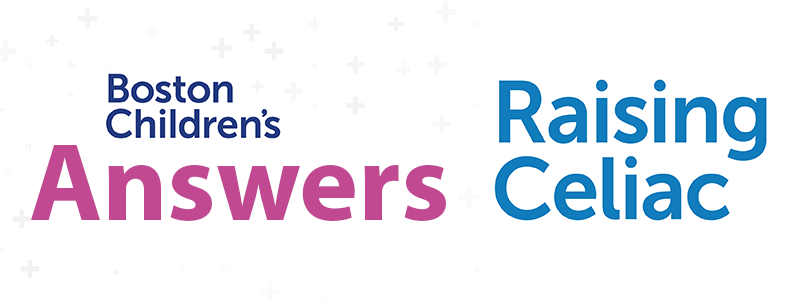
Season 2 Episode 8: Can You Get Glutened from a Kiss? What the Science Says…
Current Status
Price
Get Started
Course Credit
The following credits are available for this course:
| AMA PRA Category 1 Credits™ (MD, DO, NP, PA) | 0.5 hours |
| Contact Hours (Nurse) | 0.5 hours |
| ASWB ACE Continuing Education Credits (Social Worker) | 0.5 hours |
| CDR CPEUs (Registered Dietitian) | 0.5 hours |
(Note: a course evaluation is required to receive credit for this course.)
Vanessa Weisbrod: Welcome to season two of Raising Celiac, a podcast dedicated to raising the standard of education, awareness, and research on celiac disease and related autoimmune conditions. We have some exciting changes for this season. The Boston Children’s Hospital Celiac program has teamed up with the Celiac Disease Foundation to expand the reach of our educational podcast. Our goal is simple to provide education to as many health providers and patient families as possible. I’m Vanessa Weisbrod and I’ve started a new role as the Chief Education and Community Engagement Officer at the Celiac Disease Foundation. In every episode, you’ll also hear from Janice Arnold, an incredible social worker at Boston Children’s Hospital, who is the voice of our patient stories. Each month on the podcast, we will invite leading experts to dive into a hot topic related to celiac disease and look at how it impacts a patient family, the latest research and offer suggestions for health providers to manage these complex cases. Every episode of the Raising Celiac podcast is accredited by the Boston Children’s Hospital Continuing Education Department for physicians, nurses, social workers, dieticians, and psychologists. To claim your credits for listening to today’s episode, please visit DME dot children’s hospital.org/raising celiac. We’ll also drop that link into the show notes. Thank you to the Global Autoimmune Institute and the Celiac Disease Foundation for making this podcast possible. Now let’s get started with this month’s raising Celiac patient story. Janice Arnold: Emily is 26 years old and thriving in her career as a pediatric speech therapist diagnosed with celiac disease in college. She’s mastered the gluten-free lifestyle from home cooking and travel to reading food labels like a pro. She recently started dating Ethan, a fellow speech therapist. She met at a conference on their third date. They had dinner together. Ethan ordered a traditional wheat pasta dish while Emily as always brought her own gluten-free meal. They shared a kiss at the end of the night. The next morning, Emily hesitated. She felt fine, but a little on edge. Was it safe to kiss someone who just ate Vanessa Weisbrod: Gluten? It’s a question that so many people living with celiac disease wonder about, especially when navigating new relationships. This question is more than just adolescent drama. It cuts to the heart of how we live with celiac disease. How much gluten is too much? What are the hidden risks and where does the science actually say? We know that in people with celiac disease, even small amounts of gluten, 10 to 50 milligrams can trigger an immune response. And yes, saliva can act as a vehicle for gluten transfer, but until recently, we didn’t have the scientific data to quantify the risk. For Janice Arnold: Emily, it wasn’t about anxiety, it was about wanting evidence, but she couldn’t find anything. She started researching. But everything she found was anecdotal blogs, forums, and personal stories that left her with more questions than answers. It took several years, but just recently she came across a new study out of the Celiac Disease Center at Columbia University led by Dr. Anne Lee and her research team. The study directly examined whether kissing someone who recently ate gluten could lead to measurable gluten transfer, and if so, whether that posed a real risk to someone with celiac disease. Vanessa Weisbrod: The findings were reassuring. The study showed that while trace amounts of gluten can be present in saliva shortly after eating, the actual levels transferred during kissing were extremely low. Even more importantly, when the gluten eating partner drank water before kissing gluten was either undetectable or reduced to levels far below the threshold known to trigger symptoms or intestinal damage. In other words, kissing is safe as long as basic precautions like rinsing with water are taken. This is exactly the kind of evidence-based guidance. Patients like Emily and their partners need to live confident and fully with celiac disease. We’ll dig into the data and the bigger picture on today’s episode of Raising Celiac today we talk to Anne Lee from the Celiac Disease Center at Columbia University. Ann is an assistant professor of nutritional medicine at Columbia and the dietician for the Celiac Disease Center. Her work focuses on patient care and research with expertise in the gluten-free diet, quality of life and nutrition education. She is a legend in the celiac disease community and we are so excited to welcome Anne to raising Celiac. Jane, Vanessa. Thank you. I’m so excited to be here. Not so sure about the legend part, but just happy. Vanessa Weisbrod: Well, you are in my eyes. So Anne, let’s not bury the lead. Is it safe for someone with celiac disease to kiss their gluten eating partner? Anne: Yes, it is. Our study actually indicated that it is safe that even someone who has eaten a non-celiac partner has eaten a lot of gluten and we measured their saliva and there was lots of gluten in that that it doesn’t really transfer when you kiss someone with celiac disease who has not eating the gluten. There is some transfer, but it’s, most of the samples were all below 20 parts per million, which is considered safe. So kissing is like if you will, eating a slice of bread where you’re not going to get any more exposed than if you ate a gluten-free product. So we found there were two couples that had levels of gluten in the saliva of the patient with celiac disease that was above 20 parts per million. But neither one had any symptoms of exposure. Only one gluten detect urine test was positive. Anne: The evening after a kiss in only one patient and the other patient that the elevated level, the gluten detect didn’t pick up any gluten at all and neither one had symptoms. Now, the really interesting part, and I think the real part, that’s a practical application in all 10 couples when the partner that was non-celiac innate gluten drank four ounces of water before kissing, none of the saliva samples from the partner with celiac disease was over 20 parts per million. In fact, many of them were below the level of detection. So save to kiss, absolutely no more worry than eating a gluten-free product. But if you’re concerned, drinking four ounces of water makes it even safer. Vanessa Weisbrod: That’s great news. I have celiac disease and I have a gluten eating husband who eats gluten outside of the house. So this is very reassuring news for me. So Anne, what inspired you to explore the topic of gluten transfer through kissing in the first place? Anne: It’s actually based on, as you had said, as you were introducing me, my research has always looked at the quality of life because when we looked at our patients as they embarked, got a diagnosis, embarked on their gluten-free diet, we often found that there was a transition in not only their adopting the gluten-free lifestyle but struggles in doing so. And so in looking at the quality of life issues, it was one of those things that just one study kind of led us to more information that evolved into another study so that our early work identified that that social domain or that social aspect of quality of life was the one that was most affected by having the diagnosis and following a gluten-free diet. Then as we dove deeper and looked at some of the social anxiety, social domain issues, we found really that anxiety centered around dining out travel. Anne: And then that prompted another study, which was Jessica Lovitz’s dating study where she really looked at, okay, if we look at those particular aspects of life, what is it exactly? And it was really going out on that first date, there was a large percentage of the participants that said they were really hesitant to kiss. And so we looked at that data and said, this has such a huge impact on people’s personal life and their ability to really feel part of a community. And that was something else that was a thread that ran through many of our studies was that feeling of being isolated, that feeling of being different. And if we add that into one social life, it seemed to magnify that negative aspect. And so we wanted to look to kind of different studies and realize that the guidance we give our patients wasn’t really based on any science. Anne: It was based on, well, it seems that it’s safe. So I wanted to see if I could identify the science and identify whether or not this was something we needed to be concerned about. And I’m really happy that we now have science to back up that this is okay. Because when in getting ready to do the study and kind of designing it, I went through and looked at some social media and I was really taken aback by some of the recommendations that people were making and things that they were concerned about. People were having their date or their partner brush their teeth, take a shower, do things that would really further negatively impact the mood the day, just one social life. Vanessa Weisbrod: Absolutely. So before this study, and it’s only just recently you presented this abstract at digestive disease week, what if historically clinicians typically been telling their celiac patients about kissing and gluten? Anne: We would tell our patients that it was fine, that theoretically there was no way it was going to transfer, but we didn’t have the science from it. And I think without the science, what happened is that that practical application got spun off where people were worried or were attribute symptoms to a gluten exposure that may have been related to something else entirely, not the kissing part. And where people are so concerned about cross contact in restaurants, they then magnified that in, well, what is the potential for cross contact in kissing? And so we would try to guide them and say, we think it’s safe, drink some water or something first if you’re worried. But we didn’t have the science to say, yes, we know it’s safe. Now we do. Vanessa Weisbrod: Yeah, it’s so interesting. I think about just dating in general and who wants to kiss somebody that has food in their mouth anyways, it’s pretty gross to think about. So water seems like a great option, like Anne: Rinse your mouth. Well, and that was especially for our teens, I’m like, you shouldn’t be kissing someone that is still chewing. Just think about it. Just let’s be very practical. That is gross. And what I love about the study is that we now have that science to really assure our patients that the guidance we gave them before remains the same. It’s safe, but as a precaution, drink four ounces of water and it’s absolutely fine. There’s no worry at all. Vanessa Weisbrod: So Anne, tell us how the study was designed. How did you test for the gluten transfer between the couples? It’s Anne: Actually, it took us a long time to figure out how to do this so that we could really have a good idea of what was transferred. So the study design was, there were six different protocols in which the partner without celiac disease ate a gluten load only in two of them, the partner without celiac disease kissed the partner with celiac disease. The reason we did that is in the first protocol, we had the partner without celiac disease eat a gluten load, and I’ll talk about the gluten load in a minute and then wait five minutes and kiss the partner with celiac disease. We then had the partner with celiac disease, it’s not very pleasant, but spit into a tube so we could collect their saliva right after the kiss, it was in a sterile tube with a buffer in it, and we collected enough saliva to then test that sample and we sent it to a lab that does all the testing on the safety of the amount of gluten in food. Anne: So we knew that we were tested by the R five Eliza method, so it would be a standard test that gave us the amount of gluten that was actually in the saliva of the patient with celiac disease. The partner without celiac disease then did brush their teeth and rinse their mouth because we wanted to make sure there was no carryover of gluten. And we had them eat the same gluten load again, wait five minutes, and we collected the saliva from the patient without celiac disease that way we had both the amount of gluten that was in the saliva of the person that ate gluten and the amount of gluten that was in the saliva of the patient with celiac disease. So we could compare those two, but we wanted to mimic the actual real life dating scenario. So we had the partner without celiac disease, again, cleaned their mouth, brush their teeth so there’s no carryover, gluten, eat the gluten load again, wait 15 minutes, collected their saliva, did the same thing again, waited 30 minutes because we wanted to mimic that real life dating that you may not be making out at the table at the restaurant, but you might be smooching in the car going home. Anne: We then had the partners come back a week later, and again, the partner without celiac disease ate that gluten load, then drank four ounces of water and kissed the partner with celiac disease. We collected the partner with Celiac’s disease saliva, and then we had the partner without, repeat that again, so we could see the difference in the amount of gluten in the person eating gluten, the non-celiac partner and the amount that actually was transferred through kissing. And we found that there was great variation in the amount of gluten in the saliva of the partner without celiac disease. But there was tons, there was absolutely tons in the partner with celiac disease. As we said before, drinking four ounces of water in over 50% of those samples was under five parts per million, but all of them were below 20 parts per million. And what we did is yet to identify the gluten load because we really wanted to make sure this was a sound study. Anne: We actually only use saltine crackers as our gluten sample. And the reason being that it’s sticky, it’s in your mouth and it just contains wheat flour. So we had thought about doing pizza and beer, which would be a typical date kind of a meal, but we thought there’s too many confounding ingredients there. We wanted to see just how much gluten did transfer, and we chose the amount of tens saltine crackers because it provides twice as much gluten in that load, the gluten load that would be needed to pick it up in the gluten detect urine test. So we wanted to make sure that if it transferred, we provided plenty to be able to measure any residual gluten exposure. Vanessa Weisbrod: So I know as a person with celiac disease, if I was going to eat gluten for science that I would want to pick what I could eat. I would want to eat a croissant or some delicious meal. But of course we all know that that would not make for good science. And of course we want good science to direct us. So while I would prefer to eat something else, I do understand why you chose saltines and it was actually a really good choice for standardizing and controlling the study how much gluten is actually in a saltine cracker. And what was the response from the couples that had to eat these crackers? Anne: Oh, it was very interesting. The gluten load was, I’m trying to remember now exactly, but it was like 590 milligrams in the gluten load, which is plenty 590 parts per million and 1,770 actual grams. But Vanessa, I’ll get you those exact numbers. The couples understood why we chose the saltines, but it’s hard. The partner without celiac disease in the first visit, eight 40 saltine crackers, which is a lot of dry saltine crackers, and then 20 in the next visit because there was 10 saltine crackers with each protocol, with each experiment. And it was really, they’re dry, they’re crumbly because we had them eat them and not drink anything, not have anything else to eat or drink because we wanted to have really just that pure gluten load in their mouth. So there was some gagging, there was some, I’ll never eat saltine crackers again in my life comments at the end. But for science, they all were good about complying. Vanessa Weisbrod: That’s great. So what was the most surprising result that you discovered from the study? Anne: I think the biggest thing was how much the amount of gluten in the saliva of the patient with celiac decreased with just four ounces of water. I was not surprised that it was below the 20 parts per million in eight out of 10 of the first kisses. That to me, totally made sense. And even out of those two that were over 20 parts per million, one was only 40 parts per million and one was high was a hundred parts per million, but that all of them were below the 20 parts per million and six of them were under five parts per million was really reassuring, pleasantly surprising that just that the four ounces of water was great. Vanessa Weisbrod: So only one person had a positive urine gluten test. Can you talk more about what may have made that case different? Anne: It’s interesting, it’s supposition, but the couple was one of our younger couples, the two tests that were positive that were over the 20 parts per million were actually our two youngest couples, which not quite sure if that makes a difference. But the one that had the highest level actually had gotten engaged the night before. And as part of the protocol to be scientific, we had them come into the center, we had them have a room, we gave them all the instructions, had them eat the crackers. We did leave them alone to kiss, but we told them that the kiss had to be full open mouth, engaging tongues at least a minute. But we let them do it in private because that’s important. You’re not going to be kissing in front of a researcher in real life. But the couple that had the highest level, when we knocked on the door to say, okay, your minutes up, it took a while for them to actually respond. We had a knock a couple of times. So whether there was, they were more amorous than the others, it’s hard to say, but that’s the only one. But it was the two that were high were our youngest couples. Vanessa Weisbrod: Interesting. So how effective was simply drinking four ounces of water after eating gluten to reduce the risk of an exposure? Anne: I think the four ounces of water is very important and does minimize the risk of exposure. I think that we can really see that by the results. Vanessa Weisbrod: Did any of the participants with celiac disease report symptoms after their gluten eating partners kissed them? Anne: No. Maybe that was the other surprising thing or not surprising, where even the couple that had that highest level of gluten in the saliva, the celiac partner, no one reported symptoms that night or even the next day. No residual symptoms at all. Vanessa Weisbrod: That’s great news. It’s wonderful to hear. So Anne, one of the things that I’ve always admired about you is that your research really strives to improve the quality of life for people. So how do you think that this study is going to help reducing anxiety and improving quality of life for people with celiac disease? Anne: My hope is that it really does have a positive impact that we can now tell our patients, this is not something that you need to worry about anymore. We know this is fine. If you have any concerns, have your partner drink four ounces of a non-gluten containing beverage before kissing you. It could be water, it could be wine, just no beer. And really we want them to take away one other layer of anxiety around their social life and dating life. And my hope is that in reducing that anxiety, it will improve their overall quality of life. Vanessa Weisbrod: Absolutely. How do you hope that clinicians will change the way they talk to patients about social situations involving food like kissing after these results? Anne: I’m hoping that they now bring it up as part of their regular counseling and saying, as we kind of go through the ins and outs of managing a gluten-free diet, we always talk about navigating social situations. And now we can say, listen, contrary to what you may read in social media or some of the people that the influencers have posted negative things, we can honestly say there isn’t a risk or there’s a minimal risk in kissing a partner without celiac disease who has consumed some gluten. Vanessa Weisbrod: Absolutely. What is your message to people with celiac disease who are really nervous about physical affection with a gluten eating partner? Anne: I’m going to tell them that I want them to take a deep breath and to just realize why they fell in love with their partner and know that they’re not going to get, there’s minimal risk of contamination by being intimate. We can now say there’s science behind it and we want them to enjoy that aspect of their lives. We really do. Vanessa Weisbrod: So Anne, you and I were together at Digestive Disease Week when this story broke about your research and when you presented this beautiful poster at DDW and we watched together as the trolls online started posting comments, responding to this study. I think that sometimes people see information like what’s come out of this study. And because they’re so worried about being exposed to gluten tend to see this and say, oh, there was a couple tests that were over 20 parts per million. The research must be terrible and we shouldn’t be trusting it. But in fact, this is really the first time we’ve ever had data showing us what the true risk is of kissing somebody after they’ve eaten gluten. And I just want to encourage everybody who’s listening today to read the articles, read the research, really understand it and know that the people behind this study are people who care. Too many, I think on your research team have celiac disease themselves, right? They do. Anne: And that would be a message I would say that I would really like people to take away from this study is that we really were diligent about the study design and we had the partner without celiac disease eat that gluten load multiple times in different scenarios where it was waiting five minutes waiting 15 minutes, 30 minutes, drinking the four ounces of water. So we could really say there isn’t this cross contact, there isn’t the gluten exposure and minimizing the risk to the partner with side disease where they only kissed twice. And in the two scenarios where waiting the minimum of five minutes and then drinking four ounces of water. But we also had 10 couples, so it wasn’t one study with one couple, it was 10 and eight of them were well below 20 parts per million. It was only the two, one marginally above and one elevated that if you look at that, that’s 80% or in all 20 exposures, it’s only 10% of the time. And so taking that, you can say that’s a small risk, but I can further reduce it by drinking water. And it is a rigorous study. I really want people to understand that we really took our time in the design and the execution of it to really be able to say, we’re comfortable saying it’s minimum risk further decreased by drinking flu. Thanks, Vanessa Weisbrod: Anne. That’s so important. So for clinicians, I know our audience for this podcast is very split between clinicians and researchers and then the public who listens patients with celiac disease and caregivers of patients with celiac disease. So I’d just encourage everybody listening to really listen to what Anne said today, and as you are counseling patients, to remind them that this is the first time we have data on this and it’s really good data to help us judge the risk. And as I hear you talk about this, I don’t hear you saying to everybody, go out and tell your partner to eat a cheeseburger with a regular bun and drink a beer and then make out on the spot. I hear you giving sound data to people to make a decision, to make a calculated risk that they feel comfortable with. And I think that’s what’s so important. Anne: It’s a practical application of scientific data where no, we don’t want our celiac patients to be exposed unnecessarily, but we also don’t want them hesitant or not engaging in life because of a misinformed information. We can say, yes, you can engage and you can live a full life. Just be practical, be smart about it. Have your partner drink something before you make out. It’s that simple. Please don’t make out Vanessa Weisbrod: With a mouthful of food either, right? This is gross on any level. Glad we agree on that. That’s gross on any. Ann, thank you so much for this very entertaining and interesting discussion. Your research is truly remarkable and we are so lucky to have you as part of the Celiac community. So now let’s take a break and find out where our patient is today. Janice Arnold: Today Emily and Ethan are engaged. After reading the study together, they talked through their concerns and came up with a plan. Now, Ethan knows to drink water after eating gluten before they kiss. And that small step gives Emily the confidence to enjoy their relationship without fear. Emily says, learning the science helped me stop second guessing every moment. I don’t want to live in fear of something as simple and joyful as a kiss. And thanks to this study, I don’t have to. For couples like Emily and Ethan, these findings offer more than data. They offer freedom, peace of mind, and a reminder that science can make love just a little bit easier. Vanessa Weisbrod: And now a word from the Global Autoimmune Institute. Speaker 4: The Global Autoimmune Institute works to empower solutions in the diagnosis and treatment of autoimmune diseases. Through research, education, and awareness, while supporting multidisciplinary approaches to health, we are thrilled to support the production of this educational podcast. Vanessa Weisbrod: Thank you for listening to this episode of Raising Celiac. A special thanks to the generous contributions from the Global Autoimmune Institute to make this podcast possible. A reminder to all physicians, nurses, social workers, dieticians, and psychologists to claim your continuing education credits. For listening to today’s episode, please visit DME dot children’s hospital.org/raising celiac. If you like what you heard, be sure to write a review, like and subscribe wherever you get your podcasts. For more information, check us out on social at Boston Children’s Celiac, on TikTok, at Children’s Celiac, on Twitter, or at Celiac Kids Connection on Instagram. Have a great month.Click Here to View Transcript
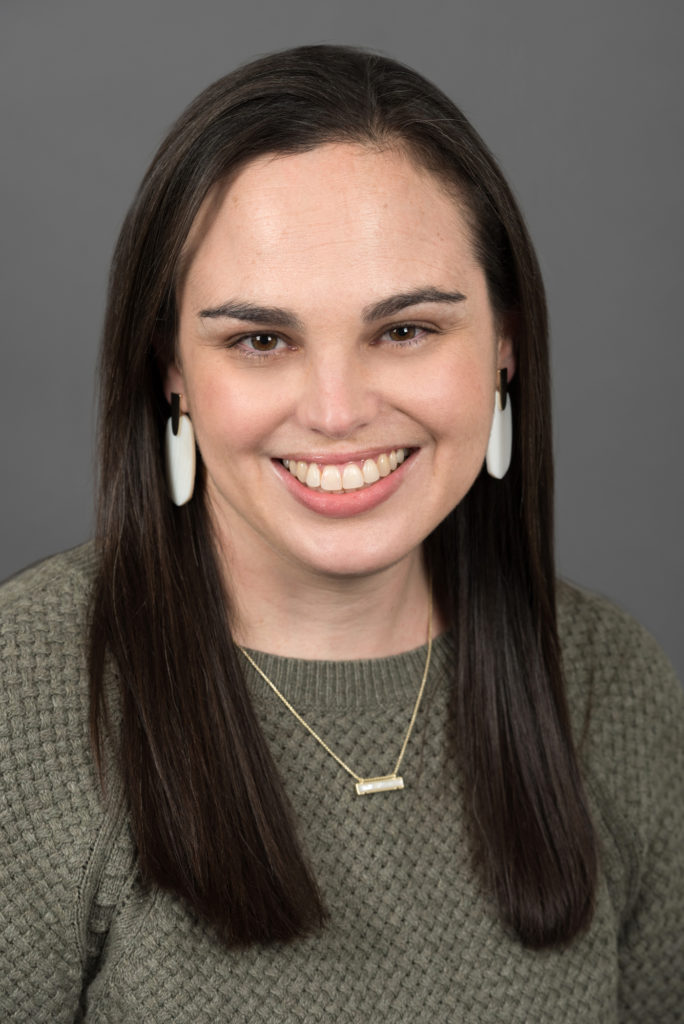
Vanessa Weisbrod
Director, Celiac Disease Program
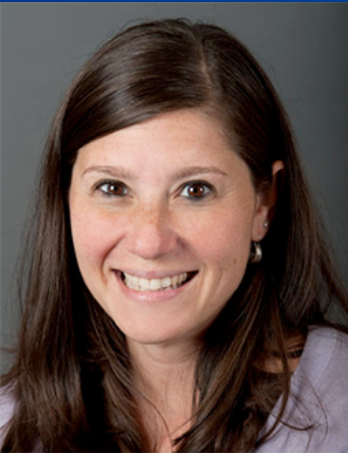
Janis Arnold, MSW, LICSW
Clinical Social Worker, Division of Gastroenterology, Hepatology, and Nutrition
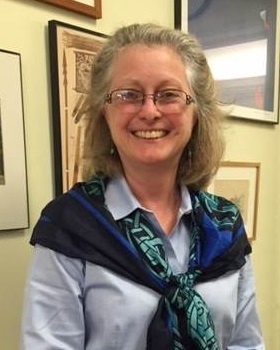
Anne R. Lee, EdD, RDN, LD
Celiac Disease Center at Columbia University
Can kissing someone who just ate gluten make you sick if you have celiac disease? It’s one of the most frequently asked—and least understood—questions in the celiac community. In this episode of Raising Celiac, we speak with Anne Lee, EdD, RDN, LD from the Celiac Disease Center at Columbia University about a groundbreaking new study that directly measured gluten transfer through kissing. We’ll explore how the study was designed, what it found (spoiler: drinking water helps!), and what these findings mean for real-life relationships and risk. You’ll also meet Emily, a newly engaged woman with celiac disease, whose personal story of love and science brings the data to life. Thank you to the Global Autoimmune Institute and Celiac Disease Foundation for making this podcast possible.
Learning Objectives:
At the conclusion of this educational program, learners will be able to:
- Understand the risk of gluten transfer through kissing.
- Learn how to reduce kissing-related gluten exposure.
- Recognize the psychosocial impact of relationships with celiac disease.
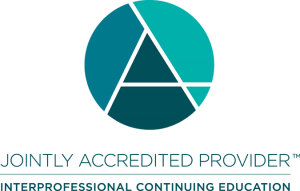
In support of improving patient care, Boston Children’s Hospital is jointly accredited by the Accreditation Council for Continuing Medical Education (ACCME), the Accreditation Council for Pharmacy Education (ACPE), and the American Nurses Credentialing Center (ANCC), to provide continuing education for the healthcare team.
Physicians
Boston Children’s Hospital designates this live activity for a maximum of 0.5 AMA PRA Category 1 Credits ™. Physicians should claim only credit commensurate with the extent of their participation in this activity.
Nurse
Boston Children’s Hospital designates this activity for 0.5 contact hours for nurses. Nurses should only claim credit commensurate with the extent of their participation in the activity.
Social Work
As a Jointly Accredited Organization, Boston Children’s Hospital is approved to offer social work continuing education by the Association of Social Work Boards (ASWB) Approved Continuing Education (ACE) program. Organizations, not individual courses, are approved under this program. State and provincial regulatory boards have the final authority to determine whether an individual course may be accepted for continuing education credit. Boston Children’s Hospital maintains responsibility for this course. Social
workers completing this course receive 0.5 ACE CE continuing education credits.
Dietician
Boston Children’s Hospital designates this activity for 0.5 contact hours for dieticians. Dieticians should only claim credit commensurate with the extent of their participation in the activity.
Disclosures
Boston Children’s Hospital adheres to all ACCME Essential Areas, Standards, and Policies. It is Boston Children’s policy that those who have influenced the content of a CME activity (e.g. planners, faculty, authors, reviewers and others) disclose all relevant financial relationships with commercial entities so that Boston Children’s may identify and resolve any conflicts of interest prior to the activity. These disclosures will be provided in the activity materials along with disclosure of any commercial support received for the activity. Additionally, faculty members have been instructed to disclose any limitations of data and unlabeled or investigational uses of products during their presentations.
The following planners, speakers, and content reviewers, on behalf of themselves, have reported the following relevant financial relationships with any entity producing, marketing, reselling, or distributing health care goods or services consumed by, or used on patients:
Vanessa Weisbrod
None
Janis Arnold, MSW, LICSW
None
Anne R. Lee, EdD, RDN, LD
None
Please see the FAQs below for common questions about how to work through a course. If you have a question or issue that is not addressed in the FAQ, please use this form to submit a help request, or if your issue is urgent, call the CME office at: 617-919-9908.
How do I navigate this course? There are two ways to access and navigate course content with the interactive table of contents: at the bottom of the main course page or in the sidebar on the right side of the page. Select the links in the table of contents to access the corresponding content. Depending on the course, access to content may be linear, in which case each content module or section can only be accessed if the prior ones are completed, or non-linear, in which case modules and sections can be accessed in any order. Use the breadcrumbs at the top of any course page to orient yourself within a course, or return to a previous course section or the main course page. How do I claim credit? If the course has been accredited, available credits will be displayed on the course home page. Select only those credits that apply to your profession, and click/tap “Apply Selection.” You may make your selection at any point while you are taking the course, or after you have completed it. How do I download a certificate? There are two ways to view/download your certificate: from within the course or from the course listing under your profile (select the document icon). In either case, you must have selected at least one available course credit type to generate a certificate. How do I view/print my transcript? You must be logged in to view your transcript. Select My Profile at the top of the page. If you do not see the transcript selector, be sure the Courses tab is selected. Select the type of credit and dates to include in your credit report. To include all credits from all time, leave the options blank. Select Download Transcript to view/download your transcript. Note each credit type in your transcripts starts a new page. How do I request a refund? Please email the CME Department to request a refund.How do navigate this course?
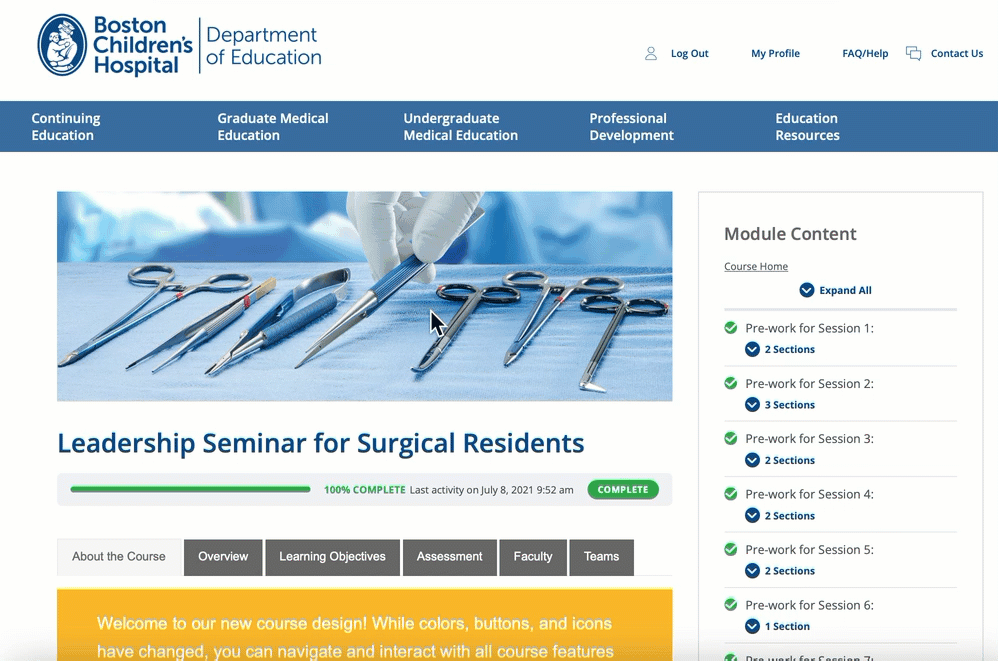
How do I claim credit for this course?
How do I download a certificate?
How do I view/print my transcript?
How do I request a refund?

